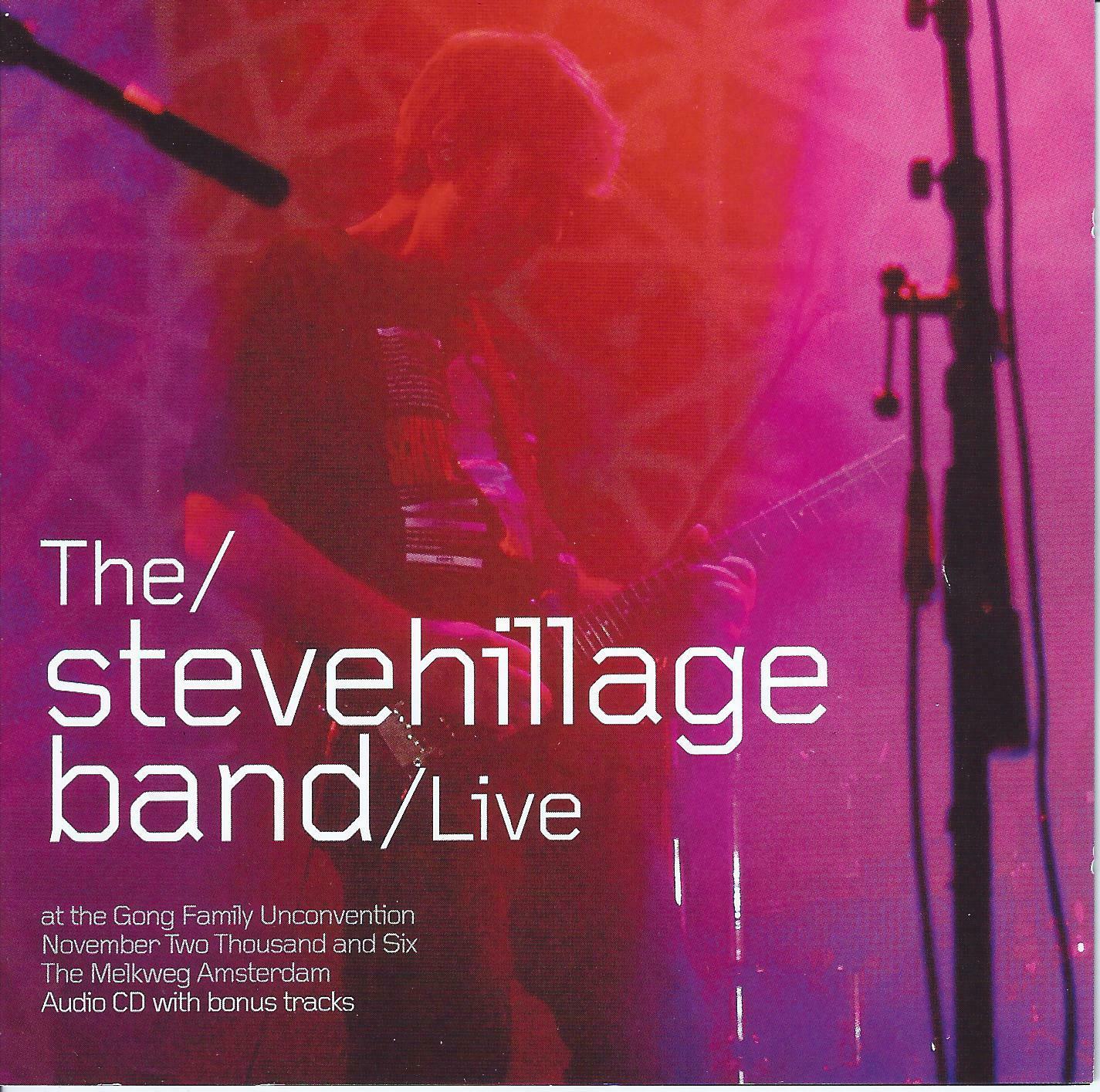 Steve Hillage has long been a fixture on the psych/space rock scene. At the age of 17, he fronted the band Uriel, and a year later, under the name Arzachal, they recorded their sole album, the original vinyl of which is a much sought after collector’s item. While the first side showed off some competent blues based psychedelic songs, it was side two that propelled the band into space rock history with the 17-minute freak out, Metempsychosis. Picking up where Pink Floyd’s Interstellar Overdrive left off, this journey into inner and outer space laid the groundwork for much space rock to come. In 1971, Hillage formed the band Khan and released the album Space Shanty, which delved deeper into more progressive psych directions. But in 1973, Hillage returned to space rock when he joined the hippie musical collective Gong and recorded and toured with them throughout the course of their seminal Radio Gnome Invisible trilogy, again laying the groundwork for much space rock to come with classic tracks such as Master Builder, The Isle of Everywhere and A Sprinkling of Clouds (the latter of which Ozric Tentacles have said was one of the templates for the creation of their sound). It was in Gong that Hillage met his soon to be lifelong partner Miquette Giraudy, and together the two of them have continued to forge new musical directions with classic 70’s psych/space albums like Fish Rising and Green to the highly influential late 70’s ambient work Rainbow Dome Musick, and onwards into the 90’s and beyond with their explorations of atmospheric guitar fuelled ambient techno.
Steve Hillage has long been a fixture on the psych/space rock scene. At the age of 17, he fronted the band Uriel, and a year later, under the name Arzachal, they recorded their sole album, the original vinyl of which is a much sought after collector’s item. While the first side showed off some competent blues based psychedelic songs, it was side two that propelled the band into space rock history with the 17-minute freak out, Metempsychosis. Picking up where Pink Floyd’s Interstellar Overdrive left off, this journey into inner and outer space laid the groundwork for much space rock to come. In 1971, Hillage formed the band Khan and released the album Space Shanty, which delved deeper into more progressive psych directions. But in 1973, Hillage returned to space rock when he joined the hippie musical collective Gong and recorded and toured with them throughout the course of their seminal Radio Gnome Invisible trilogy, again laying the groundwork for much space rock to come with classic tracks such as Master Builder, The Isle of Everywhere and A Sprinkling of Clouds (the latter of which Ozric Tentacles have said was one of the templates for the creation of their sound). It was in Gong that Hillage met his soon to be lifelong partner Miquette Giraudy, and together the two of them have continued to forge new musical directions with classic 70’s psych/space albums like Fish Rising and Green to the highly influential late 70’s ambient work Rainbow Dome Musick, and onwards into the 90’s and beyond with their explorations of atmospheric guitar fuelled ambient techno.
In 2006, Hillage and Giraudy were invited to join the Gong Family Unconvention by reforming The Steve Hillage Band, which had not played live in 18 years. Despite the long hiatus, the resulting show was a magical journey into the space rock past, brilliantly captured on both CD and DVD in this package (a re-issue from 2010). The line-up includes Hillage and Giraudy, as well as Mike Howlett (from Steve’s classic Gong days) on bass, Chris Taylor (from latter day Gong line-ups) on drums, and Basil Brooks (of both Zorch and the original Steve Hillage band) on additional synths.
Hillage seems a little bit bemused at first, as if he had just awakened to have magically found himself standing on a stage back in 1977. Fittingly, the band opens with Hello Dawn, a bouncy psych/folk rocker from the ’77 album Motivation Radio. They then launch into Hillage’s spacey synth rock version of the old George Harrison penned Beatles tune It’s All Too Much. The band seems confident, even inspired. And then they really start to catch fire with a both spacier and heavier version of Aftaglid, originally from the Fish Rising album. With an extended, trippy delay guitar opening blasting into a heavy, eastern inspired jam with Giraudy’s liquid cosmic synths bubbling around everything, this is a space rock classic, and one of the highlights of the show. No doubt pleasing fans of his early music, Hillage and company continue to explore the Fish Rising album, with a mostly mellow take on the epic Solar Musick Suite Part 1 (which nonetheless features some of Steve’s most searing guitar work of the show).
It should be pointed out here that Steve Hillage is a vastly underrated guitarist, in my personal opinion. You don’t ever see him appearing on any top 100 guitarists of all time lists (I’m looking at you, Rolling Stone!), but he should be. He works those frets like there’s no tomorrow (including the famous glissando guitar technique developed by Daevid Allen and perfected by Hillage), but like Hendrix, he is also a master of effects pedals, blending delay, flanging, fuzz and wah wah, with ease and brilliance, into a seamlessly integrated guitar style. It is really a shame that he has not gained more recognition.
Anyway, back to show! After another dip in the Fish Rising ocean with The Salmon Song, Hillage surprises with a song never before performed live. These Uncharted Lands was the original opening cut from the mostly forgotten 1982 album For to Next. Hampered by synth driven 80’s style sounds and a more new wave, less electric gypsy kind of outlook, the album is not regarded as one of Steve’s classic works. But here, free of its 80’s production, These Uncharted Realms shines as a beautiful, mellow trip into infinity, enabled greatly by an extended, spacey cosmic jam that wasn’t part of the original studio version. A blissed out end to a great show.
The DVD of the concert is well shot, and its use of psychedelic effects, tasteful and trippy. There’s also some split screen and overlay techniques used to show close ups of the musician’s fingers on their instruments without losing the overall big picture of the band playing. The CD and DVD both come with different bonuses. In the case of the DVD, it’s half an hour of insightful interviews with Steve and Miquette which also include some behind the scenes look at the preparations for the show. The CD includes 4 bonus tracks, all vintage live performances from the 1970’s. The beautiful Palm Trees (one of my all-time favourite Steve Hillage songs), along with Unzipping the Zype and Healing Feeling are all from a 1979 performance in Amsterdam. But the real treat here (for Gong fans, anyway), is an early live version of the Solar Musick Suite performed by Gong in London on October 6, 1974. It’s quite different than the version that would ultimately turn up on Fish Rising, utilizing Gong’s signature space/jazz/rock approach, with Didier Malherbe a standout, contributing lots of smouldering, squonking sax (an instrument not used on the final studio version from Fish Rising).
One of the things that struck me about listening to the 2006 performance back to back with the 1979 performances was how seamlessly they fit together. It’s almost as if the years between had dissolved, and the Steve Hillage band had never gone away. Let’s hope we don’t have to wait another 18 years to hear from them again!
For more info, visit: http://www.g-wave.co.uk
Also visit Steve and Miquette’s System 7 web page: http://www.a-wave.com/system7
Reviewed by Jeff Fitzgerald
 Human Factor are a Russian quartet that formed in 2011 to create music intended to be a “contemporary instrumental crossover between space, progressive, and alternative rock”. Across the 8 tracks on their debut CD, Human Factor combine these influences to varying degrees of success.
Human Factor are a Russian quartet that formed in 2011 to create music intended to be a “contemporary instrumental crossover between space, progressive, and alternative rock”. Across the 8 tracks on their debut CD, Human Factor combine these influences to varying degrees of success.
 Did you know that Neptune has 13 moons? And that Voyager 2 once tracked a “Great Dark Spot” on the planet with winds moving at 750 miles per hour? I couldn’t resist strolling over to
Did you know that Neptune has 13 moons? And that Voyager 2 once tracked a “Great Dark Spot” on the planet with winds moving at 750 miles per hour? I couldn’t resist strolling over to  Electronics maestro and veteran hometaper Dave Fuglewicz first recorded The Wizard’s Porch in 1996 as part of a collaborative project that fell through. Consequently, the recording sat until 2011 when Dave decided to add some finishing touches and release it as a solo effort. For the CD release of The Wizard’s Porch, Dave decided to include both versions of the piece, the as-is 1996 version and the newer spiced up version, both of which clock in at 28 minutes (just a couple seconds difference between the two).
Electronics maestro and veteran hometaper Dave Fuglewicz first recorded The Wizard’s Porch in 1996 as part of a collaborative project that fell through. Consequently, the recording sat until 2011 when Dave decided to add some finishing touches and release it as a solo effort. For the CD release of The Wizard’s Porch, Dave decided to include both versions of the piece, the as-is 1996 version and the newer spiced up version, both of which clock in at 28 minutes (just a couple seconds difference between the two). Stay are a quartet from Barcelona, Spain who – though describing themselves as a space-rock band on the back of the album – play a killer brand of 60s inspired pop-psych. They’ve had a single and some compilation contributions for Fruits de Mer Records, so that alone should tell you a lot about them. The Fourth Dimension is their fourth album.
Stay are a quartet from Barcelona, Spain who – though describing themselves as a space-rock band on the back of the album – play a killer brand of 60s inspired pop-psych. They’ve had a single and some compilation contributions for Fruits de Mer Records, so that alone should tell you a lot about them. The Fourth Dimension is their fourth album. 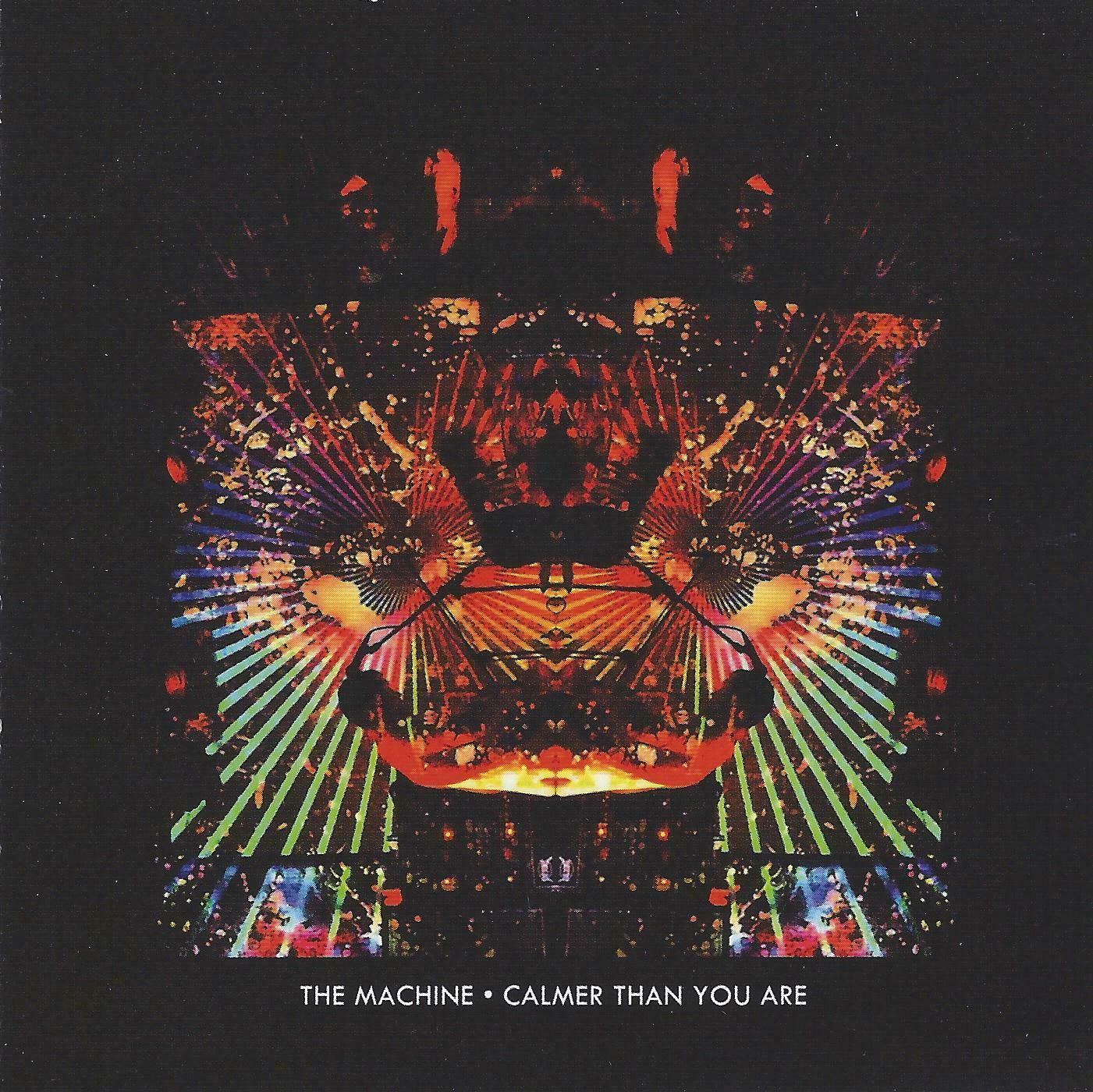 Formed in 2007, The Machine is a three-piece psychedelic rock band from the Netherlands, featuring David Eering (guitar/vocals), Davy Boogaard (drums) and Hans van Heemst (bass). Three albums in, and an impressive number of dates (including Roadburn 2010 and 2012) on their CV, the band have released Calmer Than You Are on Electrohasch Records, with the instruction on the CD case being to “Play this one even louder”. Well, one can’t say that we were not warned!
Formed in 2007, The Machine is a three-piece psychedelic rock band from the Netherlands, featuring David Eering (guitar/vocals), Davy Boogaard (drums) and Hans van Heemst (bass). Three albums in, and an impressive number of dates (including Roadburn 2010 and 2012) on their CV, the band have released Calmer Than You Are on Electrohasch Records, with the instruction on the CD case being to “Play this one even louder”. Well, one can’t say that we were not warned!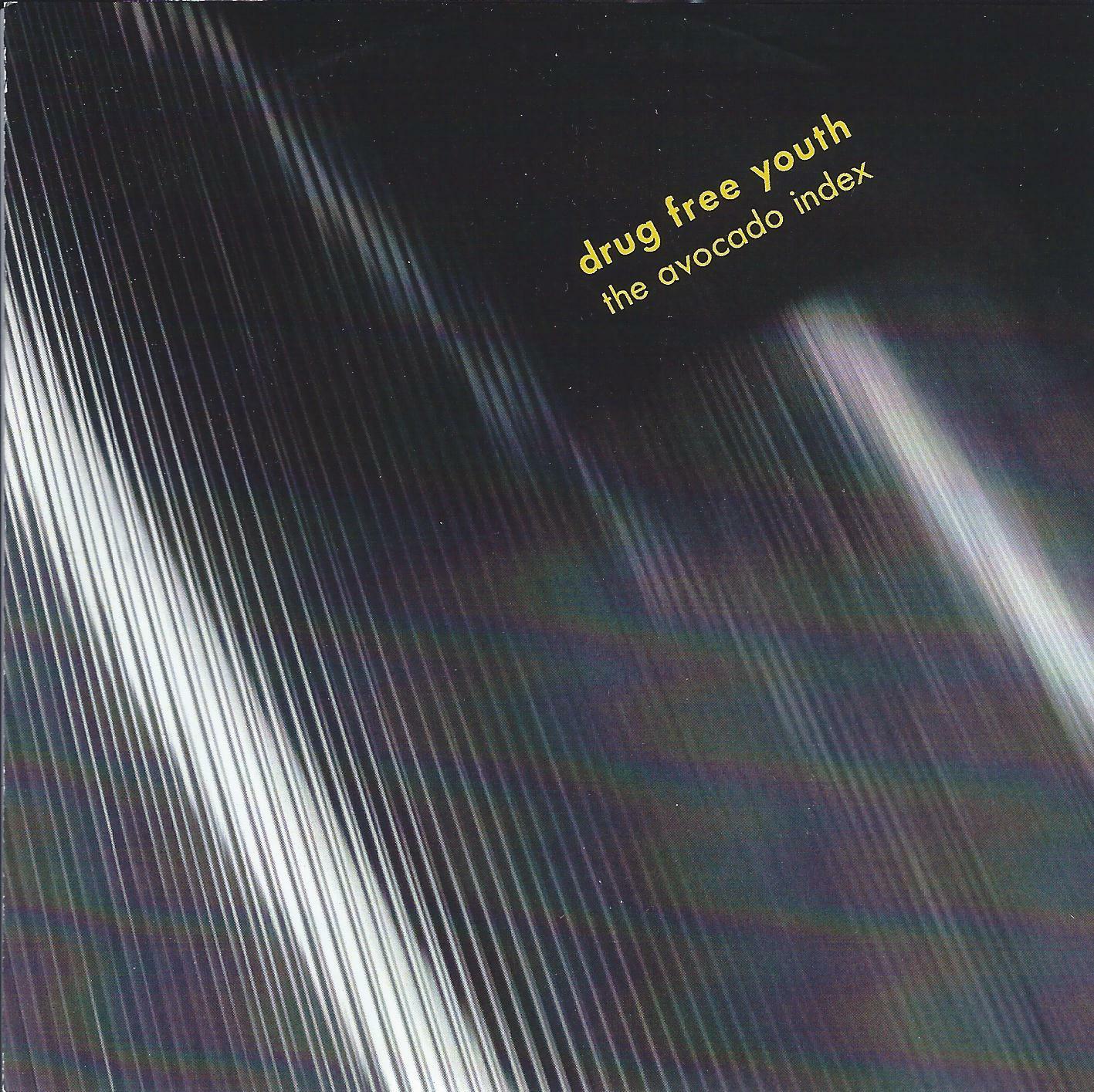 Steeped in the psychedelic, garage rock of the 60’s, Greece’s Drug-Free Youth turn out a lo-fi sonic throwback to a bygone era. Not actually a band, but one man known simply as George, he writes all the tracks and plays all the instruments on the album. Keyboards seem to be his forte though, as the guitar, bass and percussion all take second billing to the acid drenched Farfisa organ and vintage analog synths that dominate most of the tracks.
Steeped in the psychedelic, garage rock of the 60’s, Greece’s Drug-Free Youth turn out a lo-fi sonic throwback to a bygone era. Not actually a band, but one man known simply as George, he writes all the tracks and plays all the instruments on the album. Keyboards seem to be his forte though, as the guitar, bass and percussion all take second billing to the acid drenched Farfisa organ and vintage analog synths that dominate most of the tracks. In 2011 Trail Records released Tripwave: A Retrospective Collection of Russian Psychedelic Progressive Music, a collection of Russian bands that represented a stylistic gamut of the Psych and Prog map. Now they’ve expanded their scope with an impressive global collection of bands from Germany, UK, US, Belarus, Armenia, Russia, Italy, Belgium, and China. Of the 9 entries, 6 are previously unreleased tracks. Here’s the rundown…
In 2011 Trail Records released Tripwave: A Retrospective Collection of Russian Psychedelic Progressive Music, a collection of Russian bands that represented a stylistic gamut of the Psych and Prog map. Now they’ve expanded their scope with an impressive global collection of bands from Germany, UK, US, Belarus, Armenia, Russia, Italy, Belgium, and China. Of the 9 entries, 6 are previously unreleased tracks. Here’s the rundown… Steve Hillage has long been a fixture on the psych/space rock scene. At the age of 17, he fronted the band Uriel, and a year later, under the name Arzachal, they recorded their sole album, the original vinyl of which is a much sought after collector’s item. While the first side showed off some competent blues based psychedelic songs, it was side two that propelled the band into space rock history with the 17-minute freak out, Metempsychosis. Picking up where Pink Floyd’s Interstellar Overdrive left off, this journey into inner and outer space laid the groundwork for much space rock to come. In 1971, Hillage formed the band Khan and released the album Space Shanty, which delved deeper into more progressive psych directions. But in 1973, Hillage returned to space rock when he joined the hippie musical collective Gong and recorded and toured with them throughout the course of their seminal Radio Gnome Invisible trilogy, again laying the groundwork for much space rock to come with classic tracks such as Master Builder, The Isle of Everywhere and A Sprinkling of Clouds (the latter of which Ozric Tentacles have said was one of the templates for the creation of their sound). It was in Gong that Hillage met his soon to be lifelong partner Miquette Giraudy, and together the two of them have continued to forge new musical directions with classic 70’s psych/space albums like Fish Rising and Green to the highly influential late 70’s ambient work Rainbow Dome Musick, and onwards into the 90’s and beyond with their explorations of atmospheric guitar fuelled ambient techno.
Steve Hillage has long been a fixture on the psych/space rock scene. At the age of 17, he fronted the band Uriel, and a year later, under the name Arzachal, they recorded their sole album, the original vinyl of which is a much sought after collector’s item. While the first side showed off some competent blues based psychedelic songs, it was side two that propelled the band into space rock history with the 17-minute freak out, Metempsychosis. Picking up where Pink Floyd’s Interstellar Overdrive left off, this journey into inner and outer space laid the groundwork for much space rock to come. In 1971, Hillage formed the band Khan and released the album Space Shanty, which delved deeper into more progressive psych directions. But in 1973, Hillage returned to space rock when he joined the hippie musical collective Gong and recorded and toured with them throughout the course of their seminal Radio Gnome Invisible trilogy, again laying the groundwork for much space rock to come with classic tracks such as Master Builder, The Isle of Everywhere and A Sprinkling of Clouds (the latter of which Ozric Tentacles have said was one of the templates for the creation of their sound). It was in Gong that Hillage met his soon to be lifelong partner Miquette Giraudy, and together the two of them have continued to forge new musical directions with classic 70’s psych/space albums like Fish Rising and Green to the highly influential late 70’s ambient work Rainbow Dome Musick, and onwards into the 90’s and beyond with their explorations of atmospheric guitar fuelled ambient techno.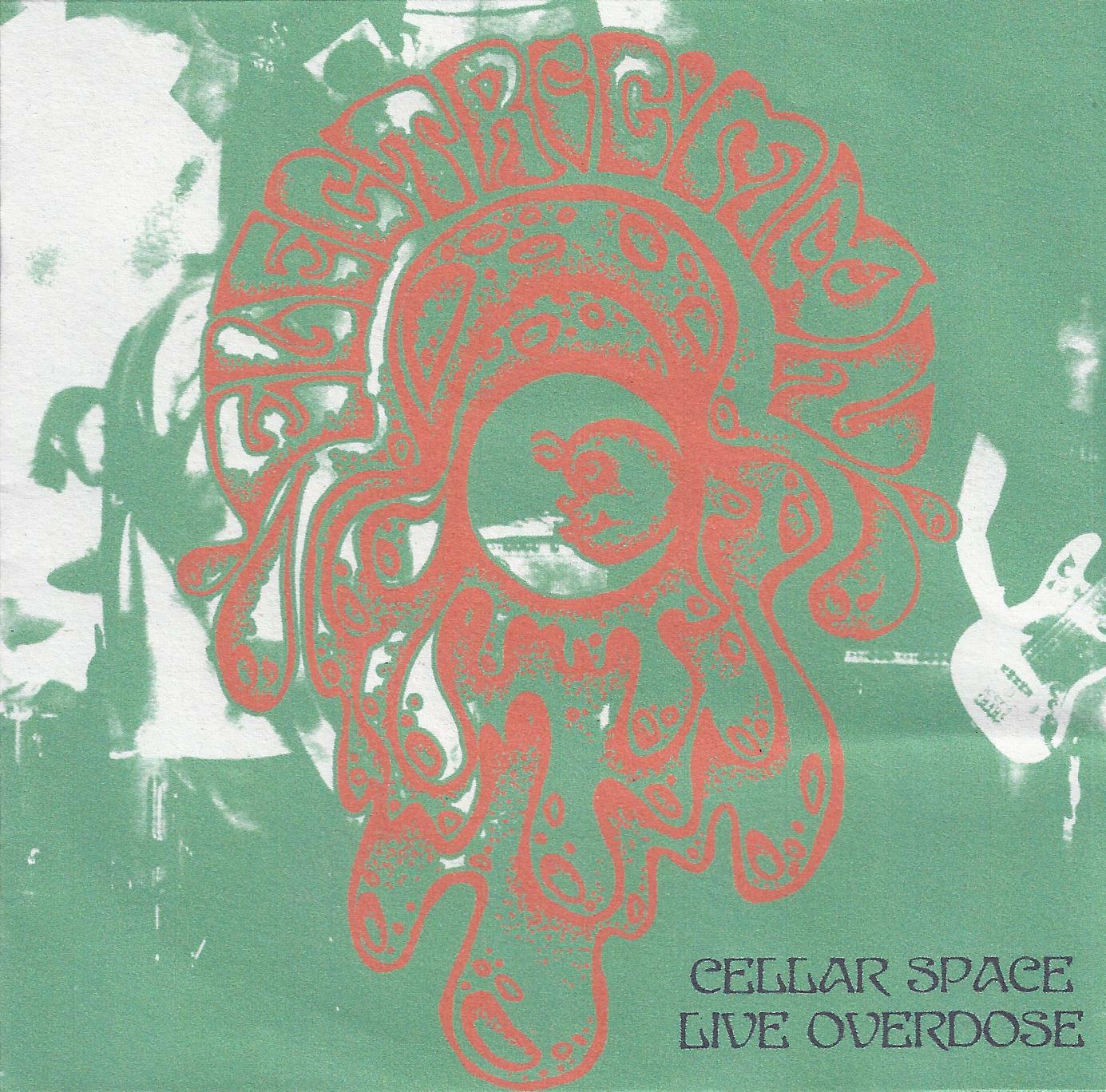 My review copy was two home-made CD-R’s that was apparently ripped from the 2-lp vinyl limited edition that the label Sulatron Records had pressed to a limited edition of 777 copies. I Believe that Cellar Space Live Overdose might be available as a single-disc title – but it only has one of these two live gigs that you get on this double-album. First record LP is of a live Electric Moon performance that took place on January 27, 2012 at Schlosskeller Darmstadt that has been accurately described as a ultra-cool psych gig. First tune The Soul Feeder (23:32) completely pulls you in with its first rate brand of 21st century mind-blowing German space rock – they would make a choice co-headliner act with bands like Hawkwind, Vibravoid or Omnia Opera. A real shame that the U.S. doesn’t get (m)any shows like this. The Idle Glance (22:27) faithfully follows up this platter’s first cut with some more fine played electronic space rock that reminded me more in the vein of, say – Spacious Mind. If I had to choose between the two discs, I would probably say that I believe I like disc 1 a bit more. Okay, with disc 2, the live show occurred on September 30, 2011 at the Kultur – Keller Fulda. Starts off with The Verge of Fainting (19:26) which I personally thought was sort of maybe Guru Guru-like, especially at the beginning. As the tune goes on, it manages to present itself as a nice healthy cosmic work-out. Then, the closer where all this galactic mayhem draws to a stunning finale with The Spaceman Returns (22:25) definitely has a nice sounding progressive-space rock feel and vibe to it. This is an audio space travel experience that makes for a great venture. It’s every bit as much of a must-have as the Electric Moon – Flaming Lake CD that I did a review of back in March 2012 here at Aural Innovations.
My review copy was two home-made CD-R’s that was apparently ripped from the 2-lp vinyl limited edition that the label Sulatron Records had pressed to a limited edition of 777 copies. I Believe that Cellar Space Live Overdose might be available as a single-disc title – but it only has one of these two live gigs that you get on this double-album. First record LP is of a live Electric Moon performance that took place on January 27, 2012 at Schlosskeller Darmstadt that has been accurately described as a ultra-cool psych gig. First tune The Soul Feeder (23:32) completely pulls you in with its first rate brand of 21st century mind-blowing German space rock – they would make a choice co-headliner act with bands like Hawkwind, Vibravoid or Omnia Opera. A real shame that the U.S. doesn’t get (m)any shows like this. The Idle Glance (22:27) faithfully follows up this platter’s first cut with some more fine played electronic space rock that reminded me more in the vein of, say – Spacious Mind. If I had to choose between the two discs, I would probably say that I believe I like disc 1 a bit more. Okay, with disc 2, the live show occurred on September 30, 2011 at the Kultur – Keller Fulda. Starts off with The Verge of Fainting (19:26) which I personally thought was sort of maybe Guru Guru-like, especially at the beginning. As the tune goes on, it manages to present itself as a nice healthy cosmic work-out. Then, the closer where all this galactic mayhem draws to a stunning finale with The Spaceman Returns (22:25) definitely has a nice sounding progressive-space rock feel and vibe to it. This is an audio space travel experience that makes for a great venture. It’s every bit as much of a must-have as the Electric Moon – Flaming Lake CD that I did a review of back in March 2012 here at Aural Innovations.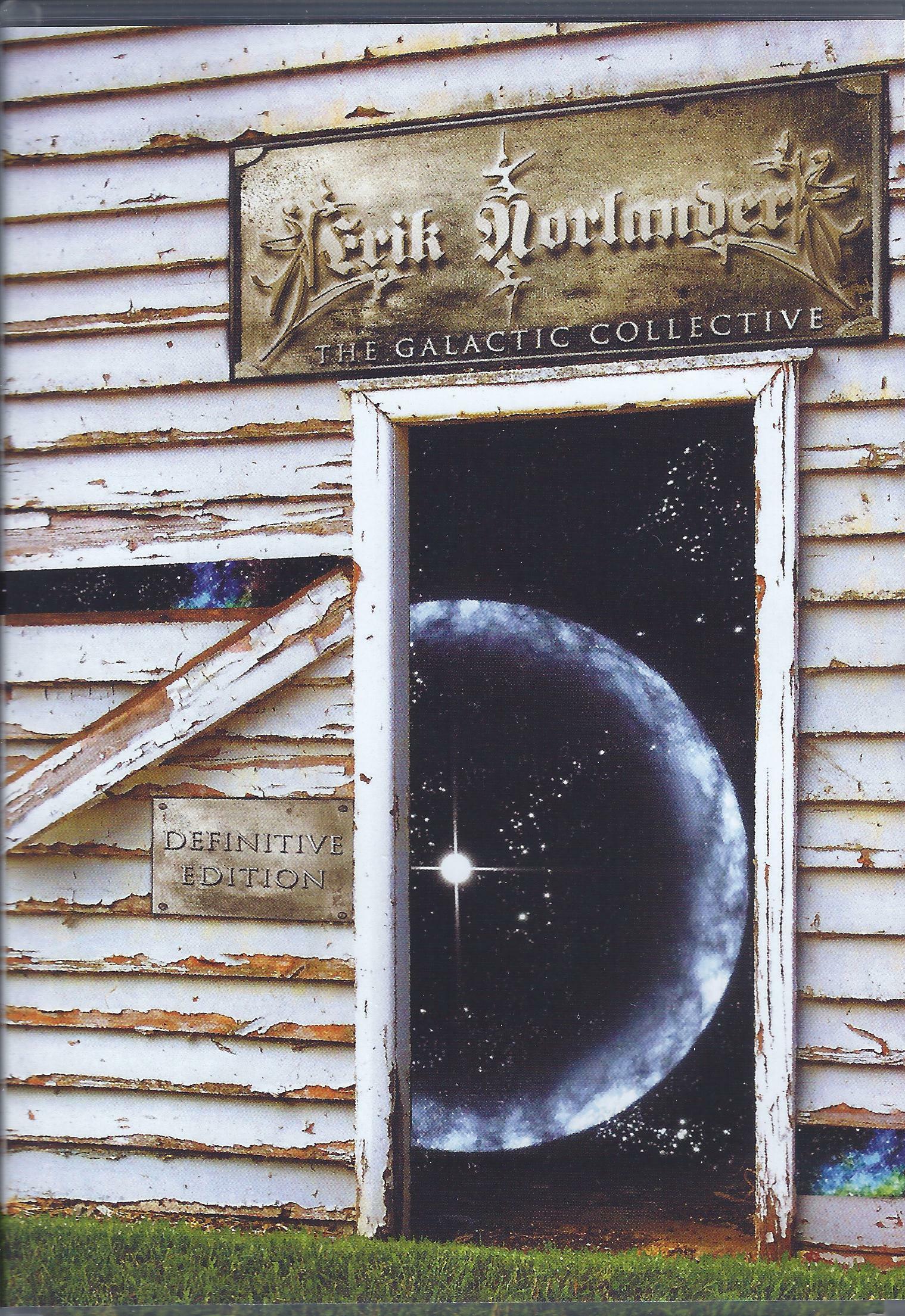 Was there ever a more powerful image of the epic days of progressive rock heaven (or hell, depending on your point of view) than that of the mighty synthesizer wizard perched atop his towering keyboard castle, king of all he can see? These days, the digital components may have reduced the size of that castle to mere rampart proportions (although they are considerably bolstered here by the intimidating Moog “Wall of Doom” backline), but the sonic inventory remains, if anything, even greater. American musician Erik Norlander is one of the new breed, heirs to throne of Lords Wakeman, Emerson and their ’70’s cohorts. As such, he has released not one but two DVD/2CD projects, one an updated version of his 2010 album The Galactic Collective, and the other a live gig from Gettysburg, recorded at the 2011 Rites of Spring Festival. As well as releasing solo albums, the first of which – Threshold, with linear notes written by old guardsman Keith Emerson – came out in 1997, Norlander supplies keyboards for Rocket Scientists and his wife Lana Lane’s band, and both these releases include new versions of material from those projects.
Was there ever a more powerful image of the epic days of progressive rock heaven (or hell, depending on your point of view) than that of the mighty synthesizer wizard perched atop his towering keyboard castle, king of all he can see? These days, the digital components may have reduced the size of that castle to mere rampart proportions (although they are considerably bolstered here by the intimidating Moog “Wall of Doom” backline), but the sonic inventory remains, if anything, even greater. American musician Erik Norlander is one of the new breed, heirs to throne of Lords Wakeman, Emerson and their ’70’s cohorts. As such, he has released not one but two DVD/2CD projects, one an updated version of his 2010 album The Galactic Collective, and the other a live gig from Gettysburg, recorded at the 2011 Rites of Spring Festival. As well as releasing solo albums, the first of which – Threshold, with linear notes written by old guardsman Keith Emerson – came out in 1997, Norlander supplies keyboards for Rocket Scientists and his wife Lana Lane’s band, and both these releases include new versions of material from those projects. With so much Erik Norlander on offer in the three disc Galactic Collective Definitive Edition, one might wonder at the need for The Galactic Collective Live In Gettysburg to be released at the same time. Indeed the difference in track listing between the two albums is relatively minimal, although Gettysburg does include the vocal tracks Capture the Sun, Secrets of Astrology and the multi-part Sunset Suite, all of which are performed by Norlander’s wife Lana Lane. Lest anyone fear any Linda McCartney married-to-the-band-leader self-indulgence, it can happily be reported that Lana (who has an impressive 22 albums released under her own name) has an excellent voice, well-suited to the epic material written by her husband. The playing by Norlander and his band is superb on both releases, with the live in the studio version having possibly a slight production edge, while the onstage version captures the excitement of a live performance (including stage banter, and an homage to Bob Moog preceding Absent Friends). Only the most hardcore fans would want to shell out for both, but neither they nor newcomers will be in any way disappointed with the musical content. Any fan of classic prog-rock keyboard playing will love the way that Erik Norlander has updated the genre for the modern age, making at least one or other of these albums an essential purchase.
With so much Erik Norlander on offer in the three disc Galactic Collective Definitive Edition, one might wonder at the need for The Galactic Collective Live In Gettysburg to be released at the same time. Indeed the difference in track listing between the two albums is relatively minimal, although Gettysburg does include the vocal tracks Capture the Sun, Secrets of Astrology and the multi-part Sunset Suite, all of which are performed by Norlander’s wife Lana Lane. Lest anyone fear any Linda McCartney married-to-the-band-leader self-indulgence, it can happily be reported that Lana (who has an impressive 22 albums released under her own name) has an excellent voice, well-suited to the epic material written by her husband. The playing by Norlander and his band is superb on both releases, with the live in the studio version having possibly a slight production edge, while the onstage version captures the excitement of a live performance (including stage banter, and an homage to Bob Moog preceding Absent Friends). Only the most hardcore fans would want to shell out for both, but neither they nor newcomers will be in any way disappointed with the musical content. Any fan of classic prog-rock keyboard playing will love the way that Erik Norlander has updated the genre for the modern age, making at least one or other of these albums an essential purchase.